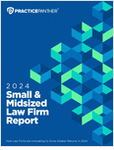Although the Fair Labor Standards Act — the key federal statute governing wage-and-hour law — was passed more than 70 years ago, courts continue to struggle with how properly to calculate back overtime damages under the FLSA in misclassification cases involving salaried employees. This continuing struggle is exemplified by recent conflicting decisions by the U.S. Court of Appeals for the 7th Circuit and the U.S. District Court for the Northern District of California, and has resulted in a pending petition for certiorari before the U.S. Supreme Court.
Generally speaking, the FLSA requires most employees to be paid overtime at a rate of 150% of their regular rate for all hours worked in excess of 40 in a workweek. The crux of the damages issue is fairly simple: If an employee has been misclassified, has she already been compensated at a straight-time rate for all hours worked, or has she only been paid for the first 40 hours of straight time? This issue is of material importance to both employers and employees — as discussed below, for a hypothetical employee, Jane Public, who earns $800 a week and works 50 hours in a week, the issue represents the difference between an additional $80 or an additional $300.
This content has been archived. It is available through our partners, LexisNexis® and Bloomberg Law.
To view this content, please continue to their sites.
Not a Lexis Subscriber?
Subscribe Now
Not a Bloomberg Law Subscriber?
Subscribe Now
LexisNexis® and Bloomberg Law are third party online distributors of the broad collection of current and archived versions of ALM's legal news publications. LexisNexis® and Bloomberg Law customers are able to access and use ALM's content, including content from the National Law Journal, The American Lawyer, Legaltech News, The New York Law Journal, and Corporate Counsel, as well as other sources of legal information.
For questions call 1-877-256-2472 or contact us at [email protected]




